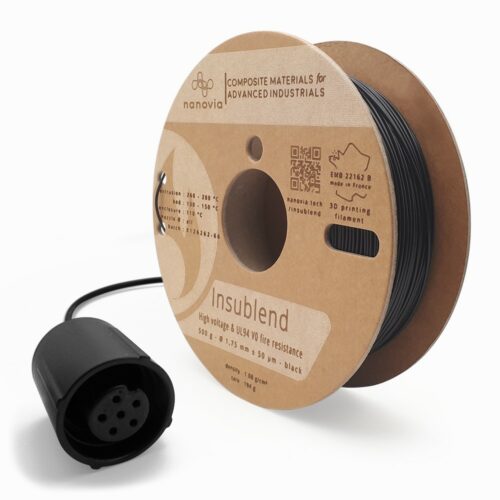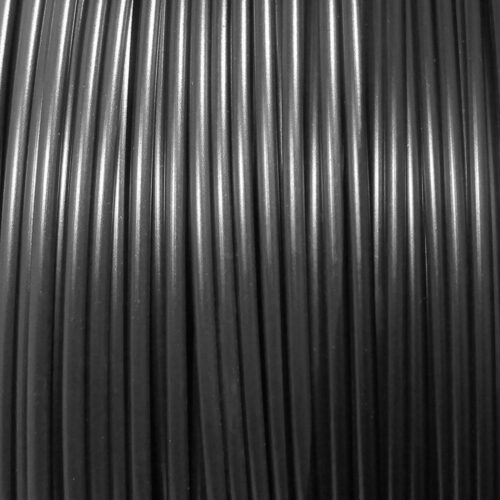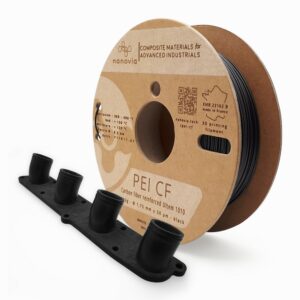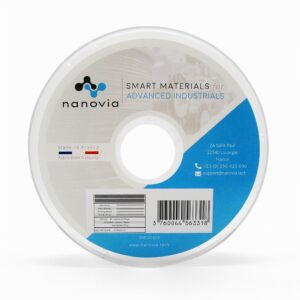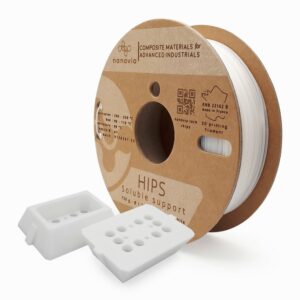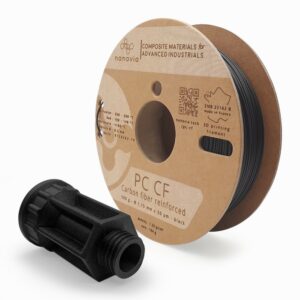Description
Properties3D Printing
Mechanical properties
Thermal properties
Electric properties
DocumentationDownload the technical chart Download the security chartlast updated : 25/04/2024 Engineered for outdoor electrical equipment, Nanovia Insublend filament allows for the creation of insulating and weatherproof 3D prints. Nanovia Insulblend is perfect for electronics (board supports, connectors…), prototypes and industrial use. Its resistance to alkali, acid , bases, ionic, and alcohol solutions , makes it an ideal material for batteries. Advantages
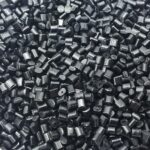
Nanovia Insublend is also available in pellet form for plastic extrusion and FGF pellet printing. Application recommendationsStorage
Printing
Health and safetyCertified UL94Nanovia Insublend filament , halogen free, is certified non flammable V-0 (@ 1,6 mm with a 5VA @ 2.5mm index) and flame retardant according to the UL 94 certification. UL 94 is a security certification for plastic materials. V-0 classification = no combustion after 10 seconds of vertical exposure to a flame. PrintingPost treatment
Chemical resistance at 20 °C :
Please consult the material data safety sheet for additional information. CertificationsPackagingVacuum packed spools, with desicant, packed in individual boxes with engraved serial number. Other formats available on demand.
|
